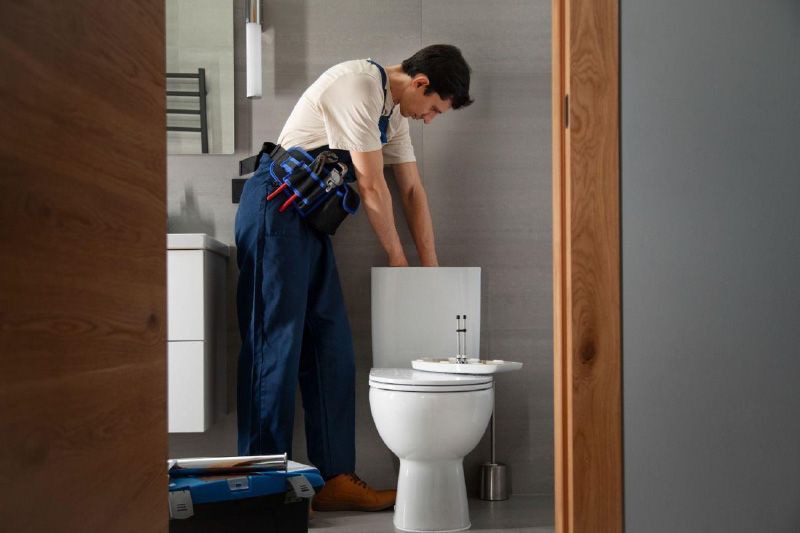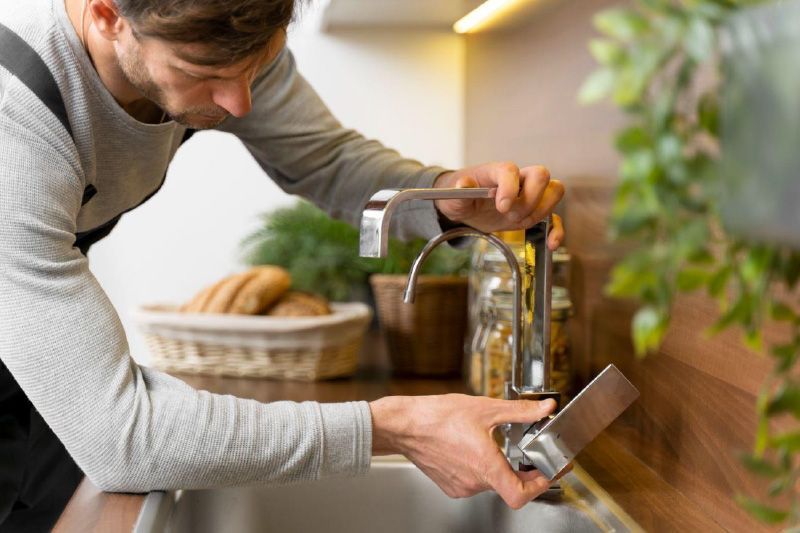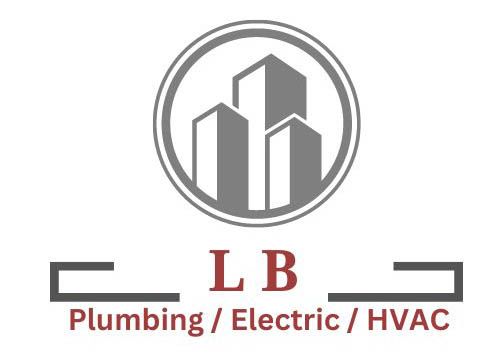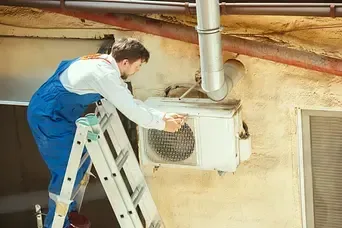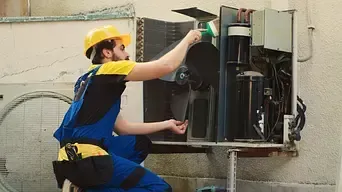Why Is My Water Pressure Low? Common Causes and Solutions
Low water pressure can turn daily tasks into frustrating chores. Whether it's struggling with a weak shower or waiting ages for a pot to fill, nobody likes dealing with this issue. Several factors can contribute to low water pressure in your home.
If you're facing this problem, LB Plumbing Services offers comprehensive solutions to get things flowing smoothly again. Explore our services or check out some of our successful projects here.
Ready to dive in and figure out what's causing your low water pressure? Let's get started!
Understanding Water Pressure
Water pressure refers to the force exerted by water as it flows through your home's plumbing system. For residential settings, typical water pressure ranges between 45 to 55 psi (pounds per square inch).
Adequate water pressure is crucial for various household functions:
- Showering: Ensures a steady and comfortable flow.
- Dishwashing: Helps in effectively cleaning dishes.
- Laundry: Assists washing machines in operating efficiently.
- Outdoor Use: Maintains strong flow for gardening and cleaning.
Experiencing low water pressure in your home can be inconvenient. If you're dealing with this issue, understanding its root causes can help you identify practical solutions.
You might be wondering how to increase water pressure in your home or need tips on how to reduce water pressure at outside spigot. In some cases, such as when low pressure is caused by issues like clogged pipes or sediment buildup, implementing a water filtration system could be an effective solution.
Common Causes of Low Water Pressure
1. Water Supplier Issues
Ever wondered why your water pressure suddenly drops out of nowhere? It might not be anything wrong within your home; it could be an issue with your municipal water supply. Yes, that's right—the source of your water can directly affect the pressure in your home.
Here’s how municipal issues can impact your water pressure:
- Maintenance Work: Municipalities often perform routine maintenance or emergency repairs on water lines. These activities can temporarily lower water pressure or even cause a complete outage.
- Water Main Breaks: A break in a major water line can divert water away from homes, leading to decreased pressure until the issue is resolved.
- Demand Fluctuations: During peak times (like mornings when everyone is showering), the demand for water can skyrocket, causing a temporary dip in pressure.
Local regulations can also play a role:
- Regulatory Changes: Sometimes, new regulations might require municipalities to reduce the pressure for safety or conservation reasons. This means that what used to be an adequate flow could suddenly feel weak.
- Upgrades and Replacements: When cities upgrade their infrastructure, they might change pipe sizes or materials, which could affect how much water makes it to your taps.
So if you notice that the water pressure is low in your house, it’s worth checking if there are any ongoing municipal works or changes in local regulations. Sometimes, it's just about staying informed on what’s happening outside your home.
For more tailored solutions and professional help with low water pressure issues, feel free to check out LB Plumbing Services. They offer comprehensive plumbing services that address everything from minor leaks to major pipeline issues.
2. Main Shutoff Valve Problems
One often overlooked cause of low water pressure in a house is issues with the main shutoff valve. This essential valve controls the flow of water from the municipal supply into your home.
Role of the Main Shutoff Valve
The main shutoff valve acts as the gateway for water entering your home. Positioned near where your water line enters the house, it allows you to stop the water flow completely when necessary, such as during repairs.
How Partial Closure Can Limit Water Flow
If this valve is not fully open, it can significantly restrict water flow. A partially closed valve might seem like a minor issue, but it can lead to decreased pressure throughout your home. Imagine wondering why does my sink suddenly have low water pressure or why is my shower pressure weak; a quick check on this valve could save you time and stress.
Got persistent low water pressure issues? LB Plumbing Services can help you diagnose and fix them—visit LB Plumbing Services today!
3. Water Meter Valve Issues
Ever wondered, "Why does my sink suddenly have low water pressure?" The culprit could be your water meter valve. This valve plays a crucial role in your home’s plumbing system by regulating the amount of water that enters your house from the municipal water supply.
Functionality of the Water Meter Valve
Located near the main shutoff valve, the water meter valve controls the flow of water into your home. When fully open, it allows maximum water flow, ensuring adequate pressure throughout your house.
Consequences of a Closed or Partially Open Valve
If this valve is not fully open, you might experience low water pressure in the house. A partially open valve can lead to reduced pressure, making it seem like your water pressure is weak in the house. This can affect everything from taking a shower (low water pressure in shower) to doing dishes.
Checking and adjusting this valve can often resolve issues with decreased pressure. If you're still experiencing problems, it might be time to call in the pros at LB Plumbing Services to take a closer look.
4. Pressure Regulator Malfunction
What does a pressure regulator do? This little gadget is responsible for maintaining consistent water pressure levels in your home. It ensures that your water pressure stays within the ideal range of 45 to 55 psi, which is crucial for the proper functioning of household fixtures like sinks, dishwashers, and showerheads.
Signs of a malfunctioning pressure regulator can be subtle or quite obvious. Here are some red flags:
- Inconsistent Water Pressure: One moment it's strong, the next it's weak. This inconsistency can be frustrating and might leave you wondering, “Why is my water pressure low?”
- Low Water Pressure in House: If you notice a general decrease in water pressure throughout your home, it could be due to a faulty regulator.
- Low Water Pressure in Shower: A common specific complaint relates to showers suddenly experiencing low water pressure.
A failing pressure regulator affects not just your daily comfort but can also put stress on your plumbing system. For professional assistance with diagnosing and fixing these issues, consider consulting LB Plumbing Services.
For those wondering how to increase water pressure in their homes or how to increase your water pressure in your home, fixing or replacing a malfunctioning regulator should be high on the priority list.
5. Corroded Pipes
Corroded pipes can be a major culprit behind low water pressure in your house. But what types of pipes are most susceptible to this issue?
- Galvanized Steel Pipes: These older pipes were commonly used in homes built before the 1960s. Over time, they tend to corrode and rust from the inside out.
- Copper Pipes: Although more resistant than steel, copper can still experience corrosion, particularly if your municipal water supply has high acidity or mineral content.
So, how does corrosion affect your plumbing system?
- Restricted Flow: As the interior of the pipe corrodes, it narrows the space through which water can flow, leading to decreased pressure.
- Weakened Structural Integrity: Over time, corrosion eats away at the pipe walls, making them more prone to leaks and bursts.
If you’re asking yourself, “Why does my sink suddenly have low water pressure?” or “Why is my water pressure low in the shower?”, corroded pipes could be to blame. For more information on maintaining your plumbing system and preventing issues like this, visit LB
6. Clogged Pipes
Ever wondered why your water pressure suddenly seems weak? One common culprit is clogged pipes. Over time, mineral buildup from hard water and debris can accumulate inside your pipes, significantly restricting the flow of water.
Here's how it works:
- Mineral Buildup: Hard water contains higher levels of minerals like calcium and magnesium. These minerals can deposit inside pipes, leading to blockages that make it difficult for water to pass through.
- Debris: Various particles and sediment can also get trapped in your plumbing system, contributing to clogs.
The result? You might notice low water pressure in the house, whether it's at the sink, shower, or other fixtures. This issue isn't just annoying but can complicate daily tasks like washing dishes or taking a shower.
Addressing clogged pipes often involves cleaning out the buildup or sometimes even replacing sections of the piping.
Dealing with low water pressure? LB Plumbing Services has got you covered! Learn more about our services here.
7. Leaky Pipes
Low water pressure in your house might be due to leaky pipes. When pipes have leaks, the water can't maintain its force as it moves through your plumbing system, resulting in weak pressure at your faucets and showerheads.
Impact of Leaks on Water Pressure:
- Decreased Pressure: As water escapes through leaks, less makes it to your fixtures, leading to that annoying trickle instead of a strong flow.
- Intermittent Issues: Sometimes, you might notice fluctuating pressure if the leak isn't constant or varies in size.
Additional Risks Associated with Leaks:
- Flooding: Even small leaks can lead to significant damage over time, causing flooding in areas like basements or under sinks.
- Contamination: Leaks can allow pollutants into your water supply, posing potential health risks.
Have a nagging question like "why is my water pressure low?" or "can water pressure affect hair loss?" Reach out to LB Plumbing Services for expert advice and solutions!
8. Shared Pipelines
In many neighborhoods and multi-family homes, shared pipelines are a common setup. This means multiple households draw water from the same main supply line. It’s like everyone is sharing the same straw, which can lead to some noticeable issues.
When several homes are using water simultaneously, you might experience low water pressure in your house. Imagine it's a hot day, everyone is watering their lawns, filling up pools, or taking showers at the same time. This simultaneous usage can cause the water pressure to drop significantly.
Here’s how it works:
- Peak Usage Times: During mornings and evenings when everyone is likely using water.
- High Demand Activities: Such as laundry, dishwashing, or running multiple showers.
This setup can turn into a real headache with water pressure weak in the house during these times. If you're noticing this pattern, it might be worth chatting with your neighbors or even checking with your municipal water supply company for solutions.
For more detailed insights and professional assistance on tackling low water pressure issues, check out LB Plumbing Services.
9. Faulty Fixtures
Fixtures in your home play a crucial role in maintaining proper water flow rates. When you experience low water pressure in house or water pressure weak in house, faulty fixtures could be the culprits.
1. Clogged Aerators
Over time, faucets and showerheads can collect mineral deposits and debris, leading to clogged aerators. This buildup restricts water flow, causing low water pressure in shower or why does my sink suddenly have low water pressure scenarios.
2. Signs of Faulty Fixtures
- Inconsistent water flow from specific taps
- Noticeably weaker streams even when other sources work fine
- Visible mineral buildup on nozzles
Daily routines can be disrupted by these issues, so it's essential to keep an eye out for signs of faulty fixtures and address them promptly. If you're struggling with any of these problems, it might be time to inspect your fixtures.
Need help solving these issues? LB Plumbing Services offers expert troubleshooting and repair services to ensure your household maintains optimal water pressure. Check out their offerings here.
10. High Water Demand
When everyone in your neighborhood decides it's shower time, you might notice your water pressure weak in house. Peak usage times can significantly affect the available pressure in homes. Think morning rush hours or early evening when everyone's back from work. If your water pressure low in house during these times, it might just be the high demand causing the issue.
Temporary issues like this are usually nothing to worry about — they resolve once the water demand decreases. However, if you notice consistently low water pressure at all times, you could be looking at ongoing problems that need attention.
For persistent low water pressure in shower or other fixtures, don't hesitate to check out LB Plumbing Services [Internal Link]. Identifying the root cause is essential to avoid any long-term inconvenience. Whether it's municipal water supply issues or something else, getting professional help can save you a lot of hassle.
Solutions for Low Water Pressure Issues
1. Inspect Valves and Regulators
When facing low water pressure, a great starting point is to inspect your home’s valves and regulators. These components play a crucial role in maintaining the right balance of water flow throughout your house.
Main Shutoff Valve
The main shutoff valve is like the gatekeeper of your home’s water supply. If it’s not fully open, it can seriously restrict water flow. Here’s how to check it:
- Locate the main shutoff valve, usually found where the main water line enters your home.
- Ensure the valve is fully open by turning it counterclockwise as far as it will go.
- If you notice any resistance or damage, it might be time to call a professional from LB Plumbing Services.
Water Meter Valve
Next in line is the water meter valve. This valve is typically located near the street or curbside and controls water entering your home from the municipal supply.
- Find the water meter box outside your home.
- Once open, locate the meter valve and make sure it’s fully open.
- Just like with the main shutoff valve, turn it counterclockwise to ensure maximum flow.
Pressure Regulator
A pressure regulator helps maintain consistent pressure levels within your plumbing system. A malfunctioning regulator can lead to fluctuating or low pressure.
- Locate your pressure regulator, which is often installed along the main water line.
- Use a pressure gauge to check if it's set within the typical residential range (45 to 55 psi).
- If the reading is off, try adjusting the screw on top of the regulator. If this doesn’t resolve the issue, you may need a replacement.
Pro Tips for Homeowners
Taking a few proactive steps can save you from unwanted surprises:
- Regular Maintenance: Schedule regular check-ups with a plumbing professional to ensure all valves and regulators are in good working condition.
- Keep an Eye Out for Corrosion: Older homes with galvanized steel pipes are especially prone to corrosion. If you notice rusty water or reduced flow, corroded pipes could be the culprit.
- Professional Help: When in doubt, calling a plumber isn't just okay; it's smart! Professionals have tools and expertise that can diagnose problems you might not see.
What's Next?
After ensuring that all valves and regulators are properly adjusted and functioning, if you’re still experiencing low water pressure, it might be time to inspect other potential issues such as clogged or leaky pipes.
Inspect Valves and Regulators
Regular inspection of your home's valves and pressure regulators can be a game-changer in maintaining optimal water pressure. Start with the main shutoff valve. This is typically located where the water line enters your house. If it's not fully open, it can restrict water flow, leading to low pressure. Make sure it's turned all the way counterclockwise.
Next, check the water meter valve. This valve is usually found on the street side of your water meter. While this one is rarely touched, sometimes utility workers might partially close it during maintenance and forget to open it back up fully. Ensure it's also fully open to allow maximum water flow.
The pressure regulator is another key component. This device maintains steady water pressure within your home's plumbing system. A malfunctioning regulator can cause inconsistent or low water pressure. Signs of a faulty regulator include sudden drops in pressure or fluctuating water flow. If you suspect an issue, it might be time for a replacement or adjustment.
LB Plumbing Services offers comprehensive inspections to ensure all these elements are functioning correctly. By addressing potential issues proactively, you can avoid the frustration of low water pressure and keep your household running smoothly.
Check out LB Plumbing Services for more information on how they can help maintain your home's plumbing system at peak performance!
Inspect Valves and Regulators
When you're dealing with low water pressure, the first step is to check the valves and regulators. These parts are essential for controlling the flow of water in your home.
Main Shutoff Valve:
- Make sure this valve is fully open. It’s usually located where the main water line enters your home.
- If it's only partially open, it can severely restrict water flow.
Water Meter Valve:
- This valve is generally found near the water meter itself.
- A closed or partially open water meter valve will impact your home's water pressure.
- Ensure it's fully open for optimal performance.
Pressure Regulator:
- The pressure regulator helps maintain a stable water pressure level.
- Signs of a malfunction include inconsistent pressure or sudden drops.
- Adjusting or replacing a faulty regulator can resolve many issues.
Regularly checking these components can save you from many headaches. Still facing problems? Sometimes, it's best to call in experts to get things sorted out.
Need help? LB Plumbing Services offers professional inspection and repair services to get your home's water pressure back on track. Don't let low water pressure ruin your day—contact us today for a hassle-free solution!
Got any questions or need more tips? Drop them in the comments below!
FAQs (Frequently Asked Questions)
What is considered low water pressure in a home?
Low water pressure in a home is typically defined as being below 45 psi. Adequate residential water pressure usually ranges from 45 to 55 psi, which is essential for proper functioning of household fixtures.
What are common causes of low water pressure?
Common causes include issues with municipal water supply, problems with the main shutoff valve, water meter valve issues, malfunctioning pressure regulators, corroded or clogged pipes, leaky pipes, shared pipelines in multi-family homes, faulty fixtures, and high water demand during peak usage times.
How can I increase the water pressure in my home?
To increase water pressure, you can inspect and adjust the main shutoff valve and water meter valve, check for leaks or clogs in the plumbing system, and ensure that your pressure regulator is functioning correctly. If these do not resolve the issue, consider consulting with a professional plumber.
Can municipal water supply issues affect my home's water pressure?
Yes, municipal water supply issues can significantly impact home water pressure. Changes in local regulations or maintenance work on municipal lines can lead to decreased pressure delivered to residential properties.
What should I do if I suspect my pipes are corroded?
If you suspect that your pipes are corroded, it is advisable to contact a professional plumber. They can assess the condition of your plumbing system and recommend appropriate solutions such as pipe replacement or repair.
How does high water demand affect my home's water pressure?
High water demand during peak usage times can temporarily reduce available pressure in homes. This situation often occurs when multiple fixtures are used simultaneously. If this becomes a recurring problem, it may be necessary to evaluate your plumbing system's capacity.
